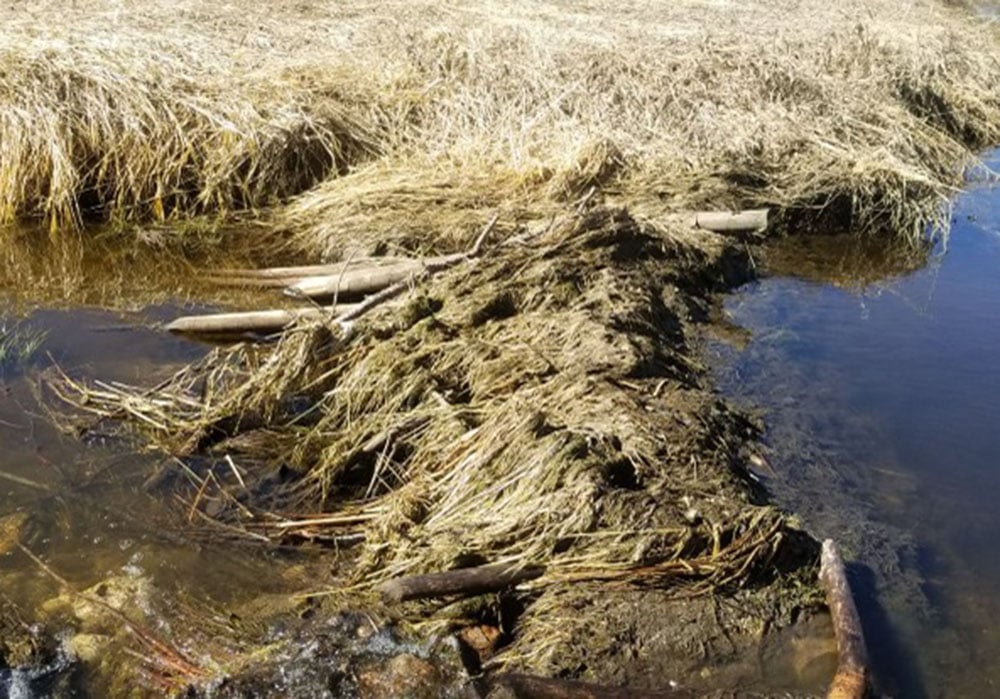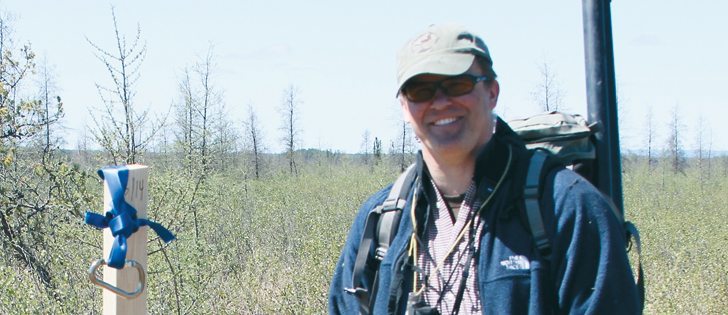TWIN BUTTE, Alta. — Senator Nicole Eaton may not have considered the beaver’s role in mitigating the effects of climate change when she suggested last year that the polar bear replace it as one of Canada’s national symbols.
But yes, to its attributes of being busy, industrious, persistent and a great swimmer, the beaver can legitimately add the role of environmental activist.
John Weaver, a biologist with the Wildlife Conservation Society in Montana, lauds beavers.
He became more interested in them after researching climate change models that predict higher temperatures, lower snow pack and declining stream flows as the Earth warms.
Read Also

Restaurant blends zero waste, ancient farming
A Mexico City restaurant has become a draw for its zero-waste kitchen, which means that every scrap of food and leftovers is reused for other purposes.
“The more I thought about it, the more I came to water, and I came naturally enough to think about beaver as being really something tangible that we could do in response to climate change.”
The usual response to water shortages is to build large dams, which are expensive and tend to destroy habitat without fully benefiting downstream life, said Weaver.
Water storage in smaller ponds is a better answer.
Enter the beaver.
“There’s a natural engineer out there that’s been storing water for millennia, namely the beaver, with a strategy of smaller ponds, more numerous ponds across the landscape,” he said.
“It would be an interesting exercise to determine if all that water stored in beaver ponds, historically, might equate to what we now try to store behind reservoirs.”
Weaver’s audience was a group of southwestern Alberta ranchers assembled by the Nature Conservancy of Canada for a social event. Not all of them befriend beavers.
“They can be very destructive, there’s no question,” said Shane Hansen, a Cardston County councillor who ranches in Alberta’s deep southwest.
“I totally agree with the presenter here that there is a benefit from them, especially upstream,” he said, but it’s hard to be patient when beaver activity floods hayfields or destroys trees in a favourite camping spot.
“Nature will fix it, but it takes too long,” said Hansen.
However, taking the long-term view is key to Weaver’s support of beavers and their busy building ways.
Beaver ponds provide unique habitat that supports other animals, birds, fish, amphibians, insects and plants, he said.
Creating a dam spreads water laterally, builds up wetlands and traps sediment that might otherwise degrade stream and river water. The water is then naturally filtered and cleansed.
As the water table rises, adjacent forage becomes more productive for wildlife, trees, plants and domestic livestock.
Weaver said a series of beaver ponds, which are created if beavers are left to their own devices, will slow down water flow and act as “speed bumps” to decrease erosion and the risk of catastrophic floods.
The water storage these ponds and dams provide is a hedge against drought.
As well, beaver ponds capture surface water and release it over time, adding important supply in the drier summer and fall seasons. It is then available for downstream users, be they man or beast.
Water that enters the aquifer as a result of beaver ponds stays cooler, and can help lower stream temperatures that might rise with climate change, Weaver said.
“The more beaver ponds, the more benefits. Every succeeding pond going downstream is filtering out that much more sediment, storing that much more water.”
Weaver said estimates of beaver populations in North America’s early history range from 60 to 400 million, and they were distributed across the continent.
Starting in the late 1600s, beavers were heavily trapped so their fur could be used primarily in hats. The rodents were integral to the formation of Hudson’s Bay Co., the fur trade and the opening and settlement of Canada.
Beaver populations were decimated in many areas by the 1830s and by the 1930s they had almost disappeared from Western Canada and the western United States, said Weaver.
They now number an estimated 15 million.
“The problem from a biological and ecological standpoint is that they’re not as well distributed as they used to be and we’re no longer receiving the ecosystem benefits that beaver had provided,” Weaver said.
The beaver dams and ponds may be more important than the beavers themselves to climate change mitigation, he added. The ponds are the functional units that provide the services and the beavers are the engineers.
Weaver acknowledged the problems that beavers can cause by damming streams and causing land flooding. However, there are ways to address this through “beaver deceivers,” drainage mechanisms that allow some water to flow from dams without the beaver discovering the method.
In this way, water levels can be maintained and the pond preserved for its many benefits.
Weaver said he thinks farmers and ranchers better appreciate beavers’ place in their world.
“It’s my sense that farmers and ranchers have come to understand the value of riparian areas and healthy streams, and I think it’s a short step from there to understand how those come about. One of the main things is beaver.”
- A family of five or six beavers may require 1.2 acres of poplar trees for its winter food supply.
- Beavers can reproduce at age two and have one litter each year, averaging three or four kits. Kits are born with fur and teeth and are immediately able to swim.
- A typical adult weighs 20 kilograms.
- Beavers are monogamous
- Beavers will travel up to 250 kilometres to start a new colony at a suitable dam building site.Beavers use their tails as rudders when swimming and as a prop when sitting or standing.
- Beavers eat wood, grasses, herbs, leaves of woody plants, fruit and aquatic plants.
- The beaver was put on the Hudson’s Bay Company coat of arms in 1678.
- The beaver was first featured on a Canadian postage stamp in 1851 and became an official symbol of Canada in 1975.


















